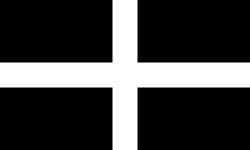Confederation of Independent Football Associations
| Confederation of Independent Football Associations (CONIFA) | |
|---|---|
| Rechtsform | Non-Profit-Organisation |
| Organisationstyp | Dachverband für Nationalverbände |
| Gründung | 2013 |
| Sitz | Luleå, |
| Präsident | Per-Anders Blind |
| Vizepräsident(en) | Kristof Wenczel, Dimitri Pagava |
| Generalsekretär | Sascha Düerkop |
| Mitglieder | 40 |
| Website | www.conifa.org |
Die Confederation of Independent Football Associations (CONIFA) ist ein Fußball-Dachverband für nationale Fußballverbände und wurde 2013 gegründet. Er setzt sich zusammen aus Mannschaften, die Nationen, abhängige Gebiete, nicht-anerkannte Staaten, Minderheiten, staatenlose Völker und historische Regionen repräsentieren, die nicht Mitglied der FIFA sind. Diese Aufgabe wurde zuvor vom 2013 aufgelösten N.F.-Board wahrgenommen.
Die CONIFA organisiert alle zwei Jahre die CONIFA-Weltfußballmeisterschaft. Das erste Turnier dieser Art fand 2014 im schwedischen Östersund statt. Im Juni 2015 wurde im ungarischen Debrecen die erste CONIFA-Europafußballmeisterschaft ausgetragen. Hinzu kommt seit 2021 der CONIFA No Limits Mediterranean Futsal Cup und seit 2022 die CONIFA-Weltfußballmeisterschaft der Frauen,[1] die CONIFA-Afrikafußballmeisterschaft[2] sowie die CONIFA-Südamerikafußballmeisterschaft.[3]
Mitglieder
Fußballverbände oder -organisationen der nachstehenden Länder sind Mitglieder (Stand November 2023).[4]
Afrika (4)Asien (8)
Europa (17) |
Nordamerika (4)Ozeanien (1)Südamerika (6) |
Ausgerichtete Wettbewerbe
- CONIFA-Weltfußballmeisterschaft 2014
- CONIFA-Europafußballmeisterschaft 2015
- CONIFA-Weltfußballmeisterschaft 2016
- CONIFA-Europafußballmeisterschaft 2017
- CONIFA-Weltfußballmeisterschaft 2018
- CONIFA-Europafußballmeisterschaft 2019
- CONIFA-Weltfußballmeisterschaft 2020
- CONIFA-Europafußballmeisterschaft 2023
- CONIFA-Weltfußballmeisterschaft 2024
Filmische Rezeption
- Re: Die alternative Fußball-WM, Dokumentation, Arte, Erstausstrahlung 13. Juli 2018. (weitere Informationen)
Weblinks
- Offizielle Website (englisch)
Einzelnachweise
- ↑ FA Sapmi – World Champions 2022. In: conifa.org. 14. Juli 2022, abgerufen am 5. Oktober 2022 (englisch).
- ↑ Celebrating the first-ever CONIFA Africa Cup. In: conifa.org. 26. Mai 2022, abgerufen am 5. Oktober 2022 (englisch).
- ↑ Maule Sur – Copa America Champions 2022. In: conifa.org. 21. Juni 2022, abgerufen am 5. Oktober 2022 (englisch).
- ↑ Members. In: conifa.org. Abgerufen am 10. Februar 2023 (englisch).
Auf dieser Seite verwendete Medien
Autor/Urheber: Fry1989 eh?, Lizenz: CC0
Flag of the Isle of Mann. This version has the triskelion centered as a whole rather than based upon the imaginary circle created by the prongs of each leg.
The Sami flag
Flag of Guna Yala, Panama. The swastika-based design was adopted by the Guna in 1925. Some variations on this flag have been used, with red top and bottom bands, or with a red ring hung around the base of the top arm of the swastika; the latter was added in 1942 to "de-Nazify" the flag.
Flagge der Mapuche genannt „Wenufoye“, gegründet 1992 von der indigenen Organisation namens Rat aller Länder.
Flag of Szekler Land (as used by the Szekler National Council)
Flag of Raetia, Switzerland
Das Bild dieser Flagge lässt sich leicht mit einem Rahmen versehen
Autor/Urheber: MAK, Lizenz: CC BY-SA 4.0
Flag of the Movement for the Self-determination of Kabylia
Autor/Urheber: Argean, Lizenz: CC BY-SA 4.0
Unofficial flag of Cham Albanians.
Nishan Sahib
Autor/Urheber: Oramfe, Lizenz: CC BY-SA 4.0
Popular flag choice used as a centerpiece of Yoruba heritage at community demonstrations.[1][2] The Oduduwa flag consists of a blue-white-green diagonal tricolor band with 16 six-pointed circular golden stars and two thinner diagonal red strips within the middle section. A central red laurel envelopes the Oduduwa Oba's crown symbol of 7 concentric rings. Within the rings is an 8 petal flower representing the pre-Oduduwa societal structure of Yorubaland. On the upper portion of the corona is an endless/Solomon knot representing integrity and nobility or the concept of 'Omoluabi'.
Autor/Urheber: Angelus, Lizenz: CC BY-SA 3.0
Flag of the Italian autonomous region Sardinia.
Bandiera napoleonica dell'Isola d'Elba
Autor/Urheber: Christopher Aragón, Lizenz: CC BY-SA 4.0
The seal of the Lordship of Kuscatan based on the "Lienzo de Tlaxcala" with the symbol of an altepetl
A black-bordered red-yellow bicolor flag used by Tamil Eelam and/or the Tamil people. Requested at the English Wikipedia Graphics Lab.
Bandera del Turquestan Unificat
Flag of Abkhazia
Flag of State of Katanga (1960–1963). This digital reproduction has its design (dimensions 3:4), all four crosses (arms have same length and are coloured red; called "croisettes" in Katanga) and colours ("rouge vermilion", "vert clair" and "blanc") based on Katanga / Shaba (Democratic Republic of Congo) (FOTW), Neue Publikation: Katanga (1960/63) at www.flaggenkunde.de and the official regulations concerning the Katangese flag. According to these sources, the flag was designed by an architect named Louis Dressen. The flag was introduced on 1960-07-18 and ratified by the national assembly on 1960-07-28 and remained until its last usage on 1963-05-24. During its short existence, the flag had many variations, primarily in the design and colour of the three crosses. Secondary sources included Self-proclaimed states in the Congo 1960-1963 (flag), Katanga 10 Francs ND (1960) (obverse side of banknote located at banknotes_com/KAT5AR.JPG), Repubblica del Katanga, République du Katanga, fino al 1871 (www.rbvex.it), Republic of Katanga - 1961 - Drapeau du Katanga, Gendarmerie Katangaise, The Republic of Katanga Mining Projects and Histoire de l'Independance de la Republic du Katanga.
Wiphala Flag, representing the historical Qulla Suyu, designed in 1979 by Germán Choque Condori.
Autor/Urheber: Sannita, Lizenz: CC BY-SA 4.0
Mixed flag indicating Armenian-Argentinian nationality





































